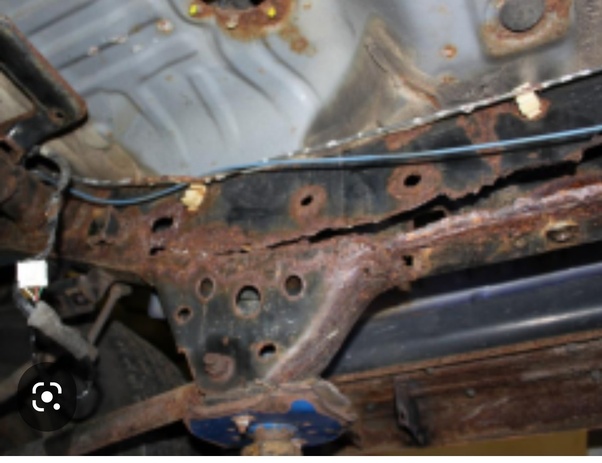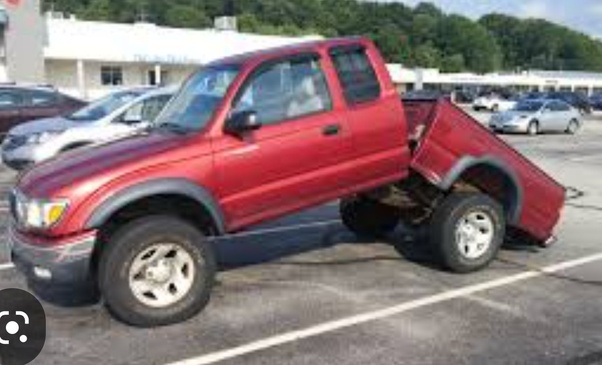- Jun 20, 2005
- 19,543
- 4,960
- 50,935
This surprised me . Sorry for the screen dump
Why do Toyota trucks rust so bad?
I worked for a major trucking company that had the contract to ship new frames to dealers to be replacements for failed and recalled trucks. Almost all were in the northeast, with a small number also going to Minnesota. Big culprit is the chemicals used to keep roads ice free in the winter. Maine, Massachusetts, New York and Vermont was where the largest number was shipped to. Dropped directly on the dealers lots, a flat bed trailer could carry 12 frames. Usually divided between 3 to 5 different dealers. The parts dept. had to wait until the frame was delivered to order all the additional parts that Toyota included in the no cost to customer reframe. In talking with parts management at various dealerships, this became a huge profit driver for them. 2 men, usually not top bracket mechanics in a month or two, got in a good flow of doing the changeover, and could reframe 2 to 2.5 trucks a week. With Toyota picking up the parts cost, and paying the them a set fee per truck, dealers actually made more profit on reframes vs selling new cars. The frames were brought across the Mexico-USA border at Laredo. There they were reloaded onto flatbed destined for Kentucky. Staged in Louisville KY, then were stacked in order so they were taken off the truck in the order of the Dealer specified on the trip list. The sad part of all this!? The replacement frames lacked the coating in the exact location that the originals did. Destined to fail, this was very surprising to me that Toyota let this quality issue continue.



247.6K views
View 1,126 upvotes
View 11 shares
1 of 12 answers
Upvote
1.1K
116
11
116 comments from
Charly Baltimore
and more

lifehackin.com
Sponsored
The Best Of The Best Gifts Of 2023.
60 gadgets and gifts that even the pickiest people will love.
Learn More
Upvote
52
More from your Digest

Dan Levi
·
Follow
Former Aircraft Maintenance Management at United Technologies (company) (1991–2011)
· Mar 17
Why do Toyota trucks rust so bad?
I worked for a major trucking company that had the contract to ship new frames to dealers to be replacements for failed and recalled trucks. Almost all were in the northeast, with a small number also going to Minnesota. Big culprit is the chemicals used to keep roads ice free in the winter. Maine, Massachusetts, New York and Vermont was where the largest number was shipped to. Dropped directly on the dealers lots, a flat bed trailer could carry 12 frames. Usually divided between 3 to 5 different dealers. The parts dept. had to wait until the frame was delivered to order all the additional parts that Toyota included in the no cost to customer reframe. In talking with parts management at various dealerships, this became a huge profit driver for them. 2 men, usually not top bracket mechanics in a month or two, got in a good flow of doing the changeover, and could reframe 2 to 2.5 trucks a week. With Toyota picking up the parts cost, and paying the them a set fee per truck, dealers actually made more profit on reframes vs selling new cars. The frames were brought across the Mexico-USA border at Laredo. There they were reloaded onto flatbed destined for Kentucky. Staged in Louisville KY, then were stacked in order so they were taken off the truck in the order of the Dealer specified on the trip list. The sad part of all this!? The replacement frames lacked the coating in the exact location that the originals did. Destined to fail, this was very surprising to me that Toyota let this quality issue continue.
247.6K views
View 1,126 upvotes
View 11 shares
1 of 12 answers
Upvote
1.1K
116
11
116 comments from
Charly Baltimore
and more
lifehackin.com
Sponsored
The Best Of The Best Gifts Of 2023.
60 gadgets and gifts that even the pickiest people will love.
Learn More
Upvote
52
More from your Digest

Dan Levi
·
Follow
Former Aircraft Maintenance Management at United Technologies (company) (1991–2011)
· Mar 17

